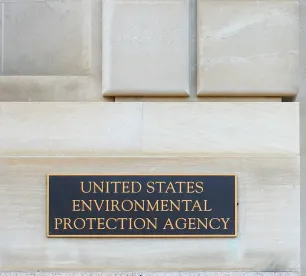The U.S. Environmental Protection Agency (EPA) announced on November 23, 2021, legally mandated changes to the fee requirements under the Toxic Substances Control Act (TSCA). This is not the fee adjustment we have been awaiting. It is a routine increase that TSCA directs EPA every three years to adjust the fees. The adjustment will go into effect on January 1, 2022, and will apply to all TSCA fees. The fee adjustment will not be retroactive and will not impact previous fee invoicing. According to EPA, separate from this action, EPA plans to propose additional revisions in 2022 to the 2018 TSCA fees rule to supplement its January 2021 proposal to ensure that TSCA fee amounts capture up to 25 percent of the actual costs of TSCA activities, fees are distributed equitably, and fee payers are identified through a transparent process.
In its announcement, EPA states that the TSCA program “has been and remains seriously underfunded.” The 2016 amendments to TSCA provided EPA with expanded authority to collect fees from chemical manufacturers and processors to help defray up to 25 percent of the costs associated with eight categories of TSCA implementation activities, including risk evaluations, new chemical notices, test rules, consent agreements, and test orders, as well as the cost of reviewing and managing confidential business information (CBI). EPA published a final TSCA fees rule in October 2018, meaning that EPA did not collect any fees under the rule until fiscal year 2019, and excluded 100 percent of the costs of the first ten risk evaluations. According to EPA, as a result of this and other factors, TSCA fees collected since the 2016 amendments have covered only half of the 25 percent target. EPA states that it “estimates it has less than half of the resources needed to review and approve new chemicals in the manner Congress intended and observes that the statutory deadlines for completing nine of the first 10 risk evaluations were missed.”
According to EPA’s TSCA Fees Table, consistent with the formula in the 2018 final rule, EPA will increase fees by the inflation rate, calculated to be 18.9 percent. EPA calculated the inflation rate by dividing the Producer Price Index (PPI) for September 2021 (348.8) by the PPI for January 2019 (293.4).
EPA states that consistent with the formula in the proposed rule, in any scenario where there is not a single consortium comprised of all manufacturers subject to a single fee, it will take the following steps to allocate fees:
-
Count the total number of manufacturers, including the number of manufacturers within any consortia;
-
Divide the total fee amount by the total number of manufacturers and allocate equally on a per capita basis to generate a base fee;
-
Provide all small businesses who are either (a) not associated with a consortium, or (b) associated with an all-small business consortium with an 80 percent discount from the base fee referenced previously;
-
Calculate the total remaining fee and total number of remaining manufacturers by subtracting out the discounted fees and the number of small businesses identified; and
-
Reallocate the remaining fee across those remaining individuals and groups in equal amounts, counting each manufacturer in a consortium as one person.
EPA notes that it is providing an approximately 80 percent reduction in TSCA administration fees to submitters who qualify as small businesses. EPA states that small business fees are only applicable to qualifying small businesses that are either not associated with a consortium or associated with an all-small business consortium.
Commentary
This announcement appears to be a routine increase in the TSCA fees based on the regulations in 40 C.F.R. Section 700.45, which requires that every three years, fees be adjusted for inflation. This action is independent from the rulemaking that EPA initiated in January 2021.


 />i
/>i
